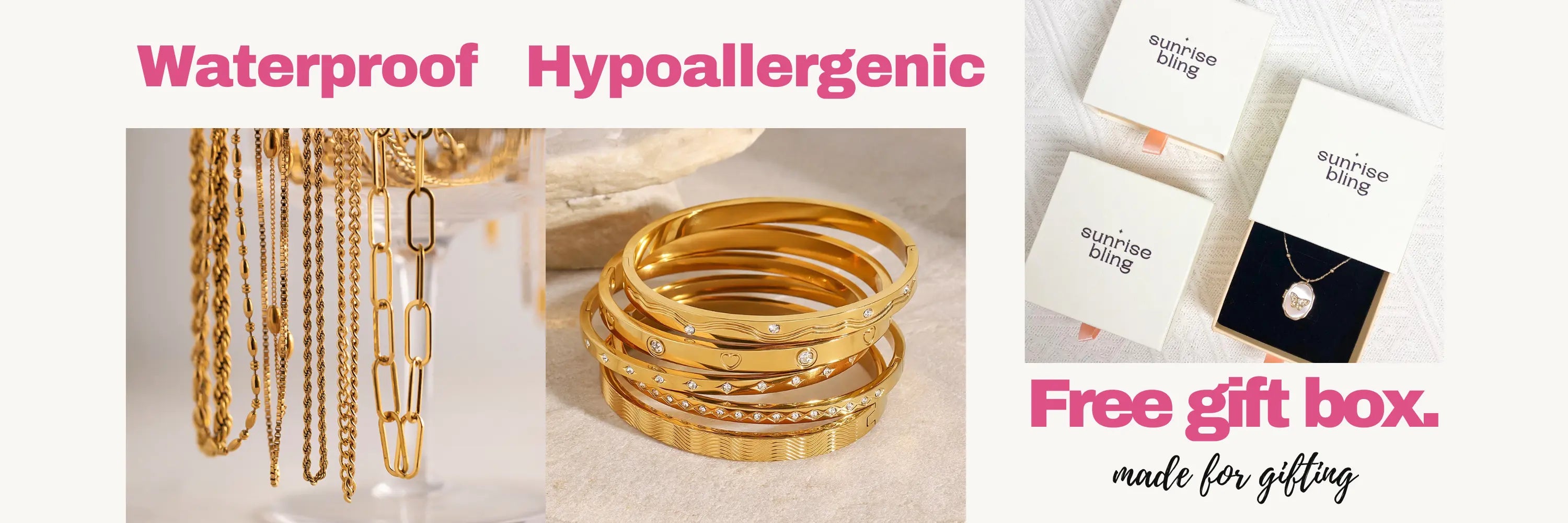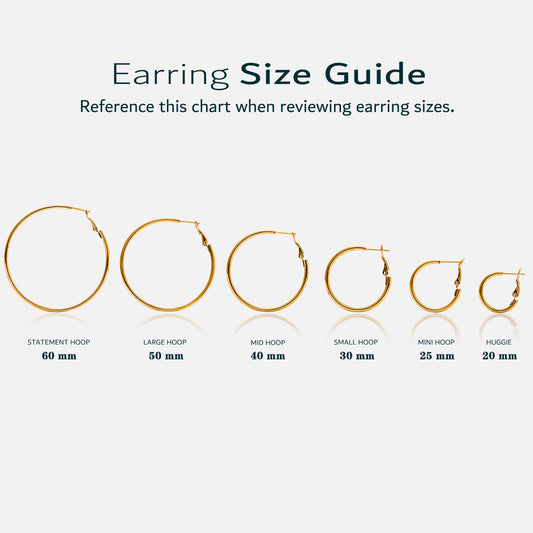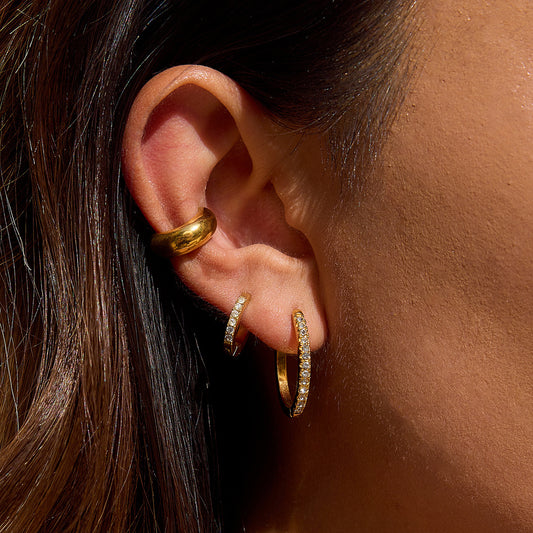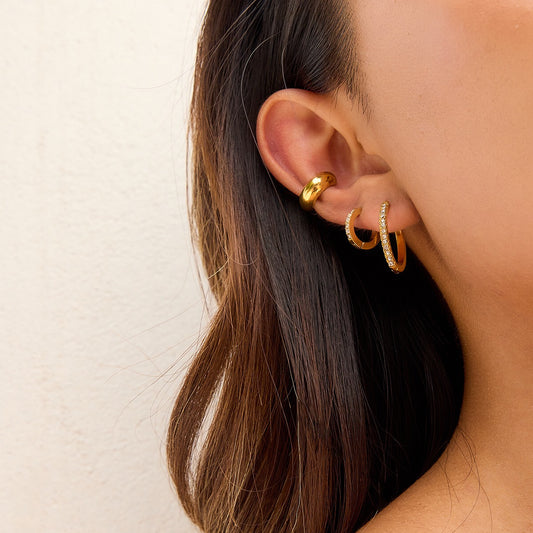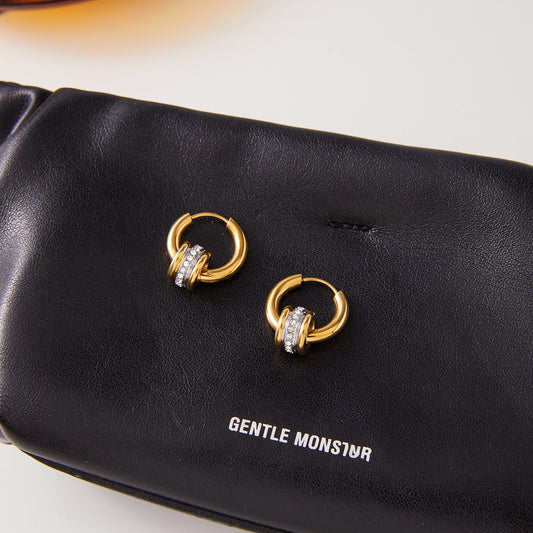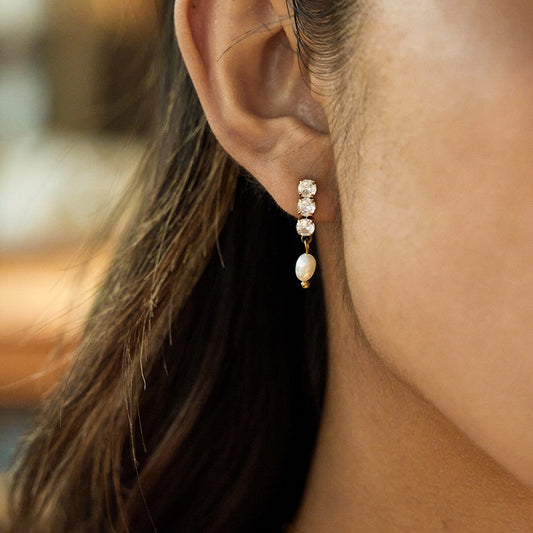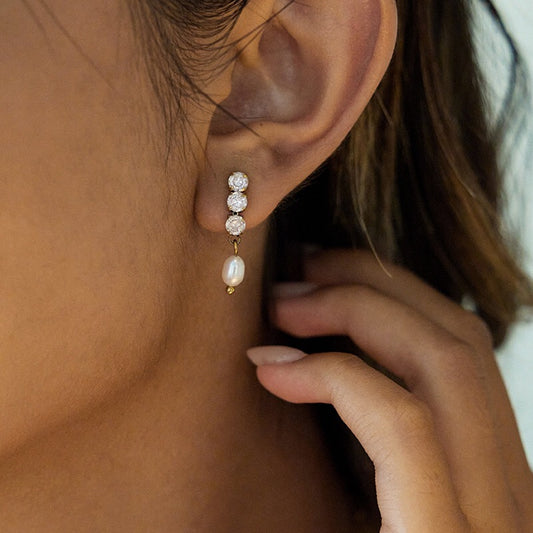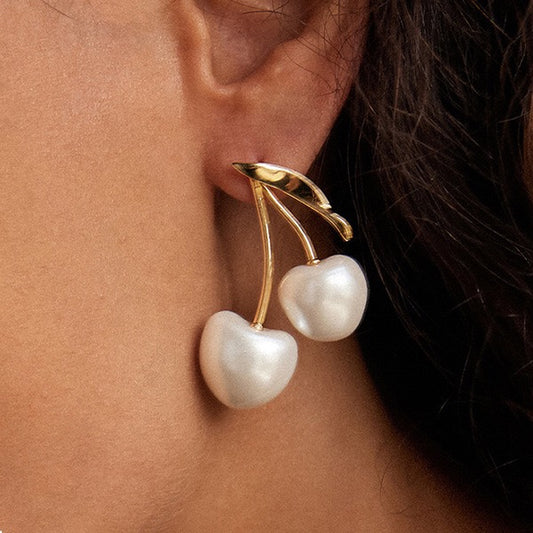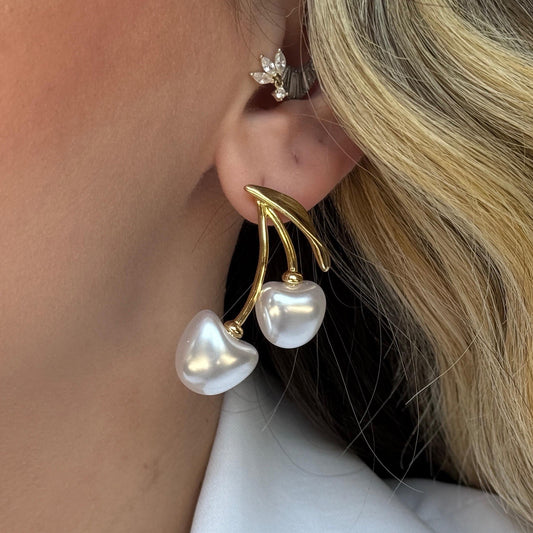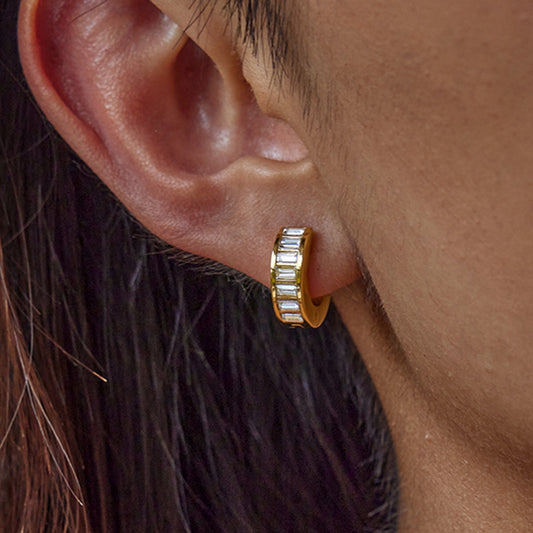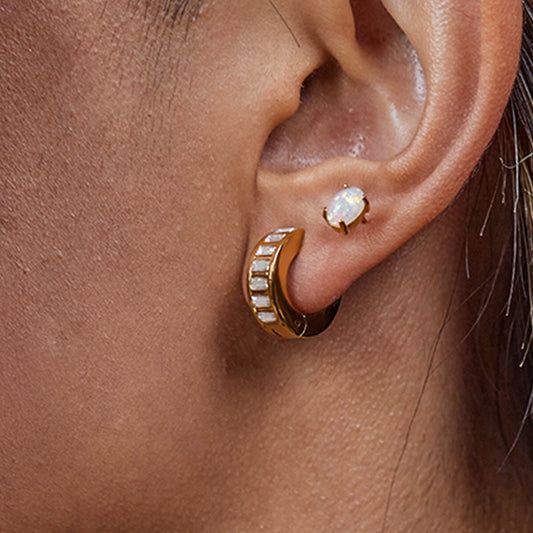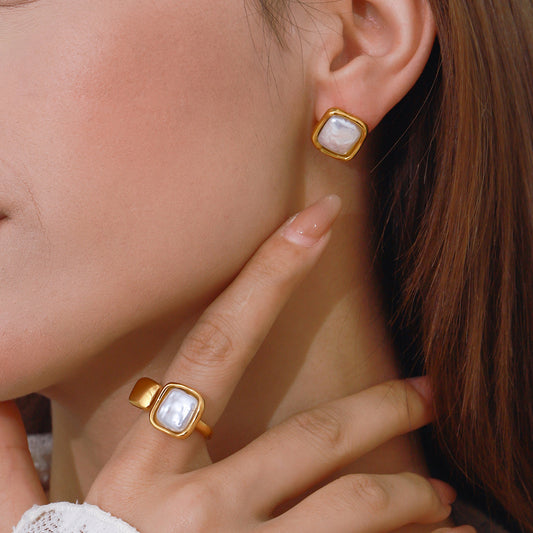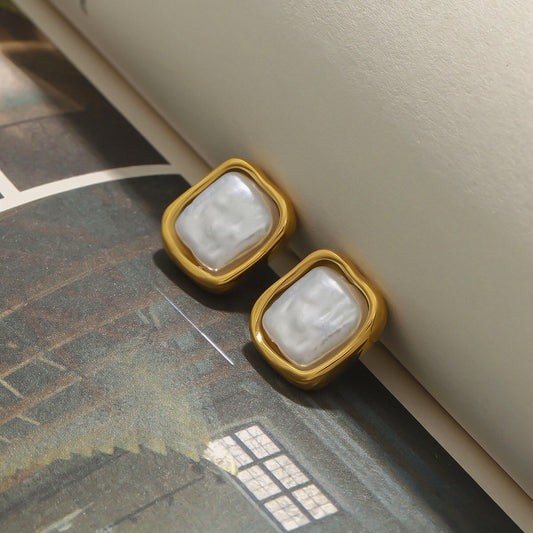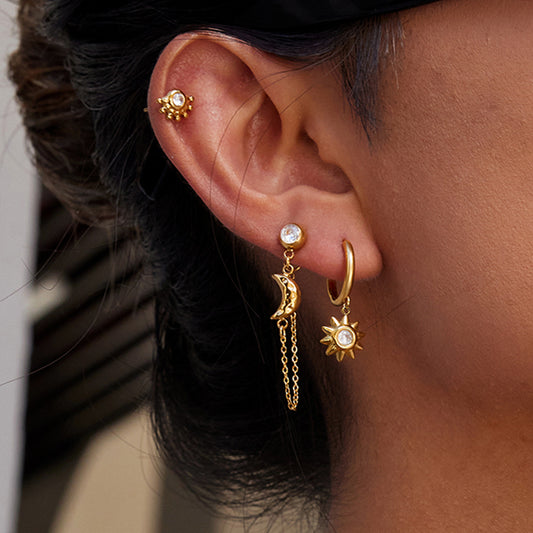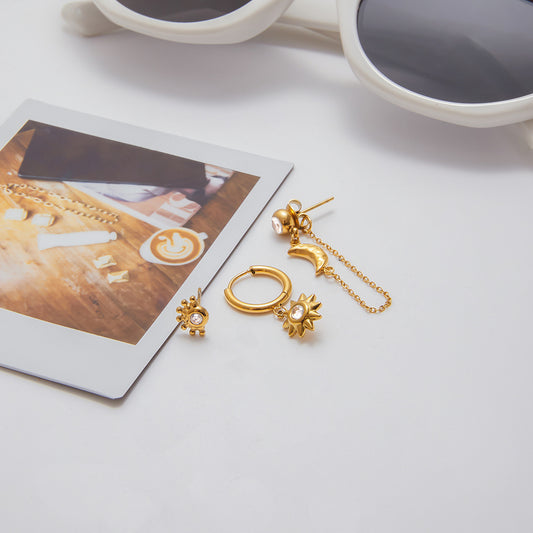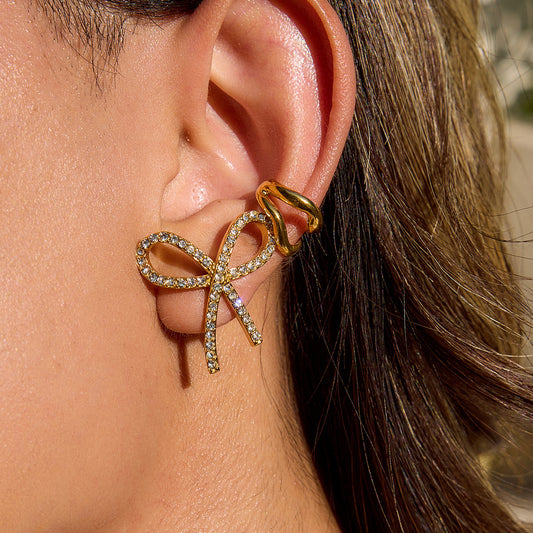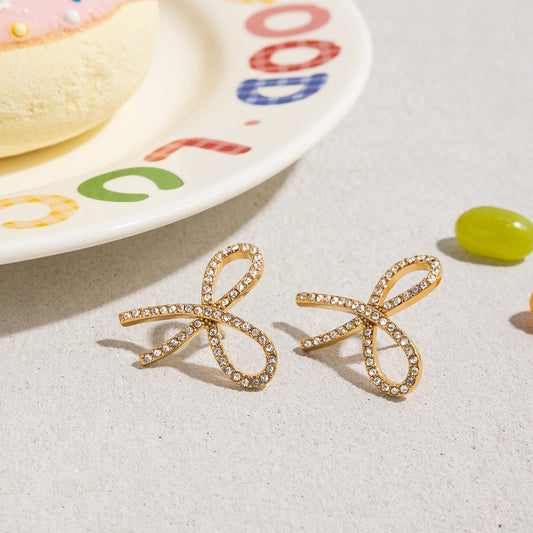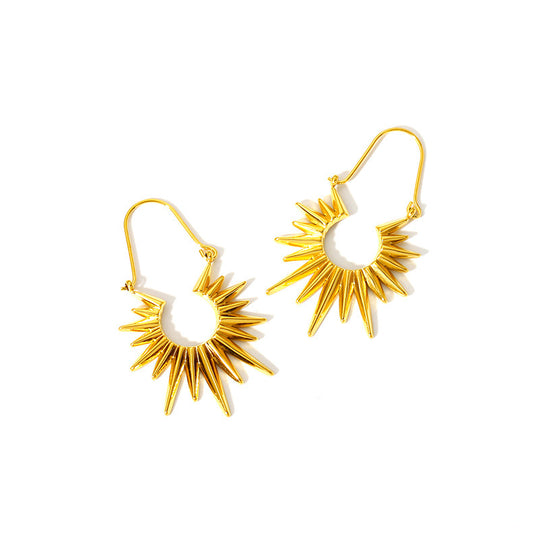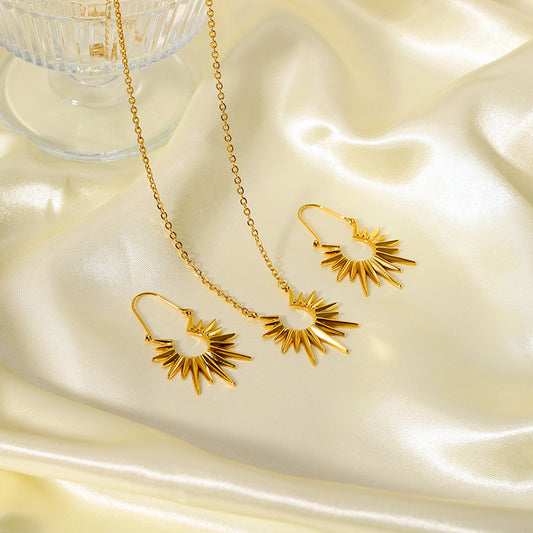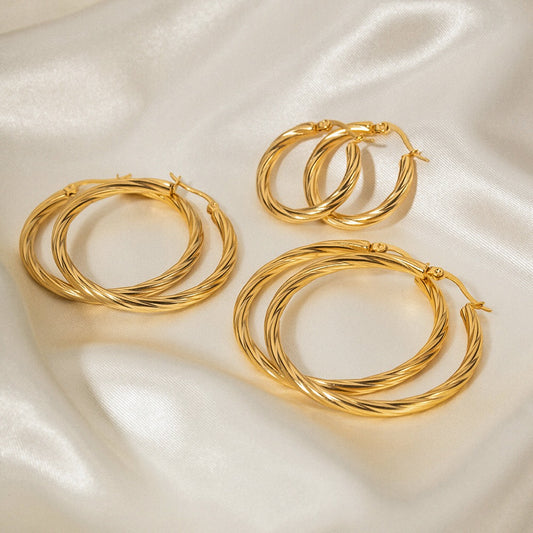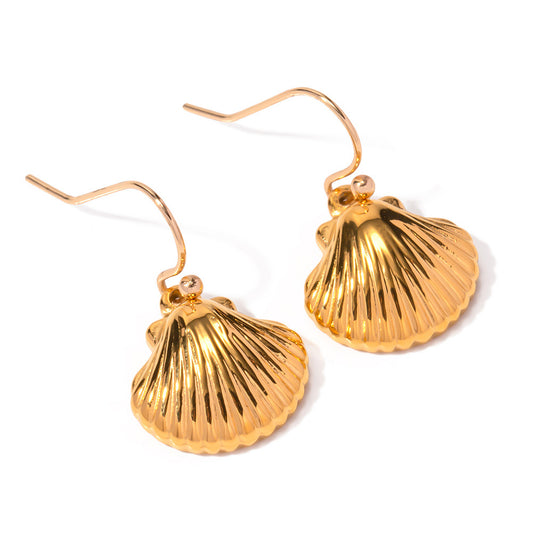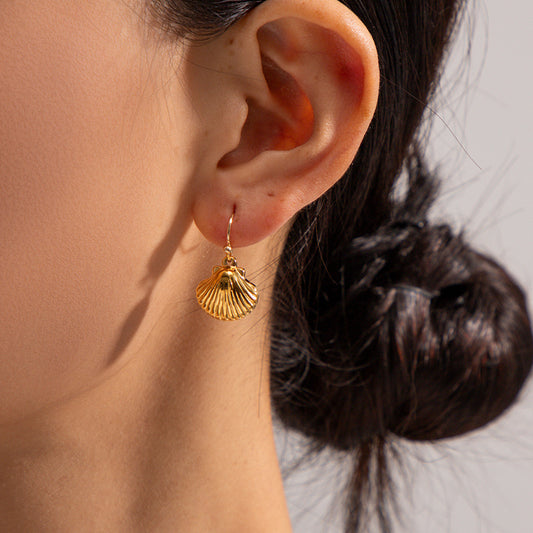Diamond studs are the ultimate expression of “less is more” in jewelry—their simple design delivers maximum sparkle, making them a staple in every woman’s collection. Jewelry market worldwide is projected to reach a staggering US$373.87bn. What makes them so indispensable? Unlike statement earrings that demand attention, diamond studs offer quiet luxury: a subtle glow that elevates any outfit without overwhelming it. Whether your wife wears them to the office, on date nights, or during family gatherings, they’re a timeless piece that balances elegance with practicality. This guide covers everything you need to know about diamond studs, from their design to where to buy authentic pairs—and why they’re the perfect gift for the woman you love.
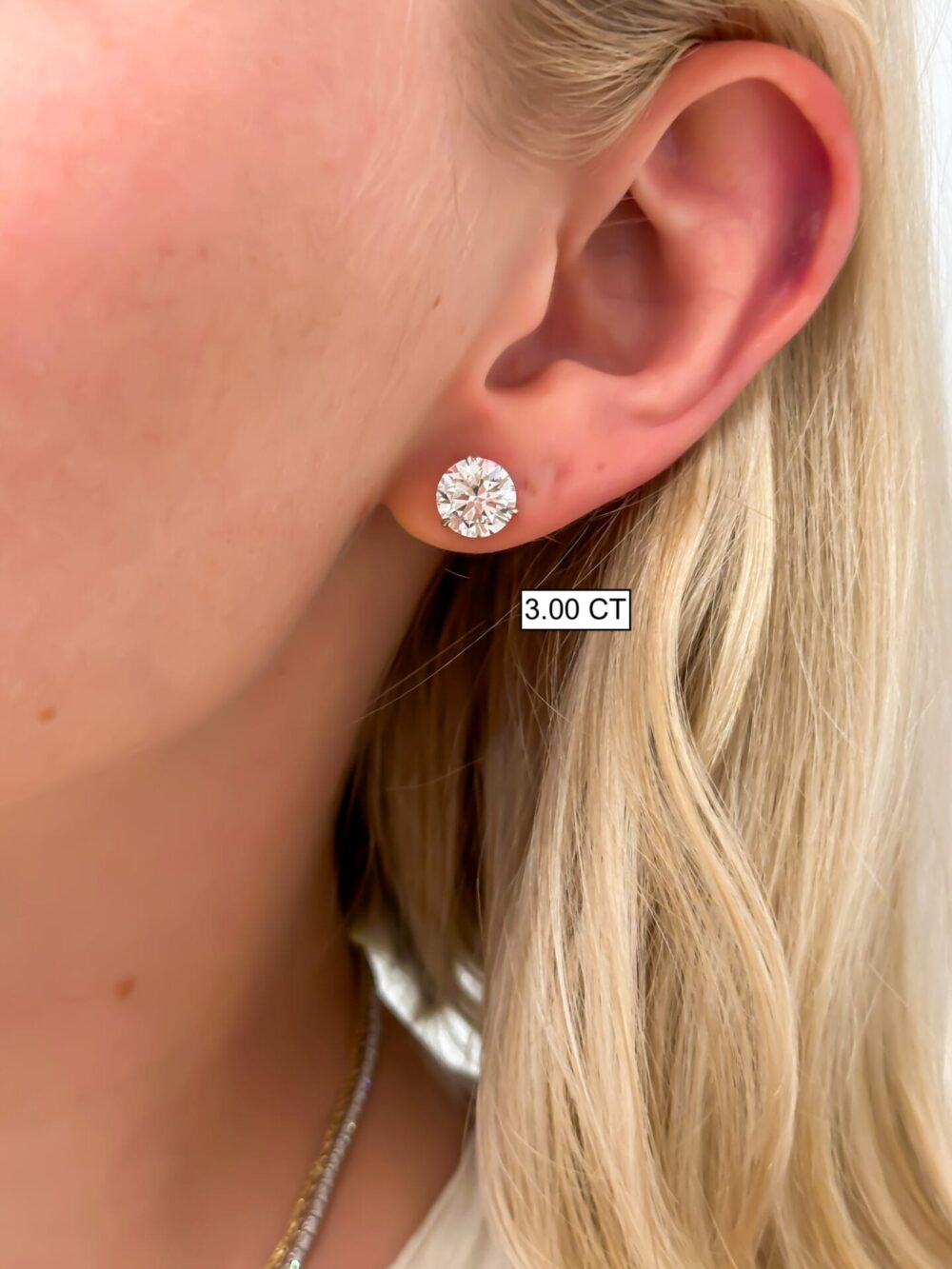
What Are Diamond Studs?
Diamond studs are a type of earring featuring one or more diamonds set in a metal post (the “stud”) that fastens securely to the earlobe (or cartilage, for specialized styles). Unlike dangly or hoop earrings, they sit flush against the ear, putting the focus entirely on the diamond’s brilliance. Their defining trait is minimalism: no extra frills, just the diamond and a simple setting to hold it in place.
Diamond studs trace their roots to the early 20th century, when jewelers began crafting small, wearable diamond earrings for everyday use (prior to this, diamonds were mostly reserved for formal necklaces or tiaras). Today, they’re available in a range of sizes and styles, but they all retain that core “less is more” appeal.
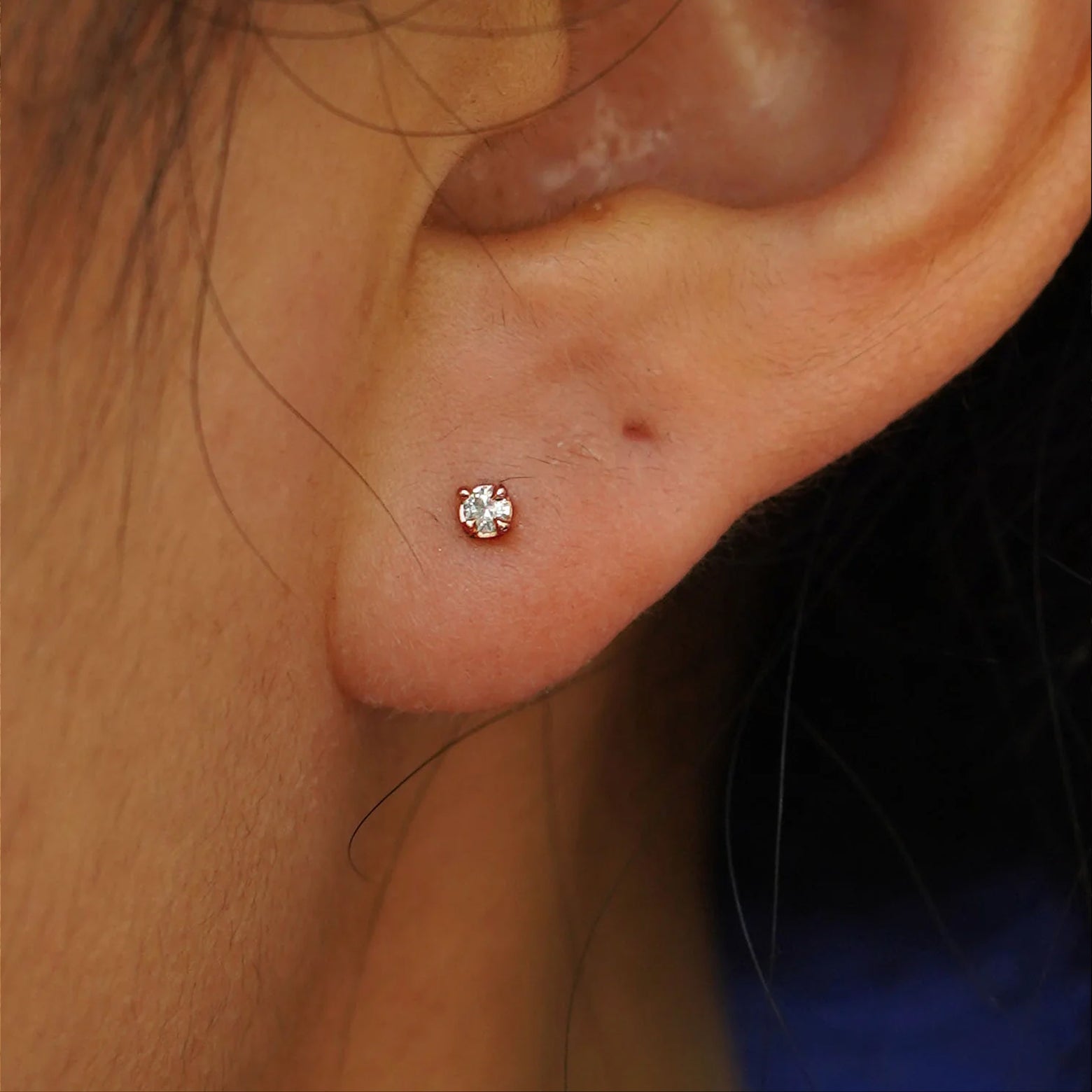
Key Characteristics of Diamond Studs
-
The 4Cs of Diamonds: The quality of the diamond determines its sparkle and value—here’s what to prioritize:
-
Cut: The most critical factor for shine. “Excellent” or “Very Good” cuts maximize light reflection, making even small diamonds look brilliant. Round cuts are the most popular (they have 58 facets for optimal sparkle), but princess (square) and cushion cuts are also common for a modern twist.
-
Carat Weight: Measured by “total carat weight (TCW)” for pairs—e.g., 0.50 TCW means two 0.25-carat diamonds (one per ear). Common sizes: 0.25–0.50 TCW (subtle), 0.75–1.00 TCW (everyday glamour), 1.50+ TCW (statement).
-
Color: Diamonds range from colorless (D-F, most valuable) to near-colorless (G-J, ideal for studs). G-J diamonds look white to the naked eye but cost 20–30% less than D-F, making them a budget-friendly choice.
-
Clarity: Measures internal flaws (inclusions). “VS2” or “SI1” clarity is best for studs—these diamonds are “eye-clean” (no visible flaws) and more affordable than “VVS” (very few inclusions) or “IF” (flawless) grades.
-
Setting Styles: The setting holds the diamond and impacts both security and style:
-
Prong Setting: 4–6 thin metal prongs (usually 4 for round diamonds) cradle the diamond. This setting exposes the most diamond surface to light, boosting sparkle—ideal for showcasing high-quality stones.
-
Bezel Setting: A thin metal rim wraps around the diamond’s edge. More secure than prongs (great for active wives) and adds a sleek, modern look—hides minor flaws in lower-clarity diamonds.
-
Halo Setting: A small circle of tiny diamonds surrounds the center diamond, creating the illusion of a larger stone. Adds extra sparkle without increasing the main diamond’s size—perfect for gifting.
-
Metal Types: The post and backing complement the diamond and affect durability:
-
14k Gold: The most popular choice—available in yellow (warm, classic), white (enhances diamond brightness), and rose (romantic, trendy). Balances durability (harder than 18k gold) and value, ideal for daily wear.
-
Platinum: Hypoallergenic, scratch-resistant, and naturally white—never fades or tarnishes. The most luxurious option (2–3x the cost of 14k gold) but perfect for wives with sensitive skin or heirloom goals.
-
Sterling Silver: Rare for real diamond studs (silver is soft and tarnishes easily), but some affordable pairs use rhodium-plated silver. Best for occasional wear, not everyday use.
-
Backing Types: Ensures the stud stays secure:
-
Butterfly Back: A small, spring-loaded backing (shaped like a butterfly) that slides over the post. Easy to use but less secure for active lifestyles.
-
Screw Back: The post has threads, and the backing screws on. The most secure option—great for wives who exercise or travel frequently.
-
La Pousette Back: A hinged backing that clicks into place. More secure than butterfly backs but easier to use than screw backs.

How Diamond Studs Differ from Other Diamond Earrings
-
Vibe: Diamond studs are understated and versatile, while dangly diamond earrings (e.g., drops, chandeliers) are formal and eye-catching. Studs work for 90% of occasions; dangly styles are better for weddings or galas.
-
Practicality: Studs won’t get caught on hair, clothing, or bags—ideal for busy wives who juggle work, kids, or hobbies. Dangly earrings can be cumbersome for daily tasks.
-
Focus: Studs highlight the diamond’s natural beauty, while other diamond earrings often prioritize design (e.g., intricate metalwork, multiple gemstones).
Why Are Diamond Studs So Popular?
Diamond studs have remained a top jewelry choice for decades because they solve a key problem: they’re both luxurious and livable. Their popularity spans ages, styles, and budgets—from teens getting their first real diamond pair to grandmothers passing down heirloom studs. Below are the key reasons for their enduring appeal:
Timeless Style That Never Fades
Unlike trendy jewelry (e.g., chunky hoops, layered earrings) that feels dated after a few years, diamond studs are classic. A pair bought in 2024 will look just as elegant in 2044—making them a long-term investment, not a fleeting purchase. They’ve been worn by icons like Audrey Hepburn and Meghan Markle, and they still feel fresh today.
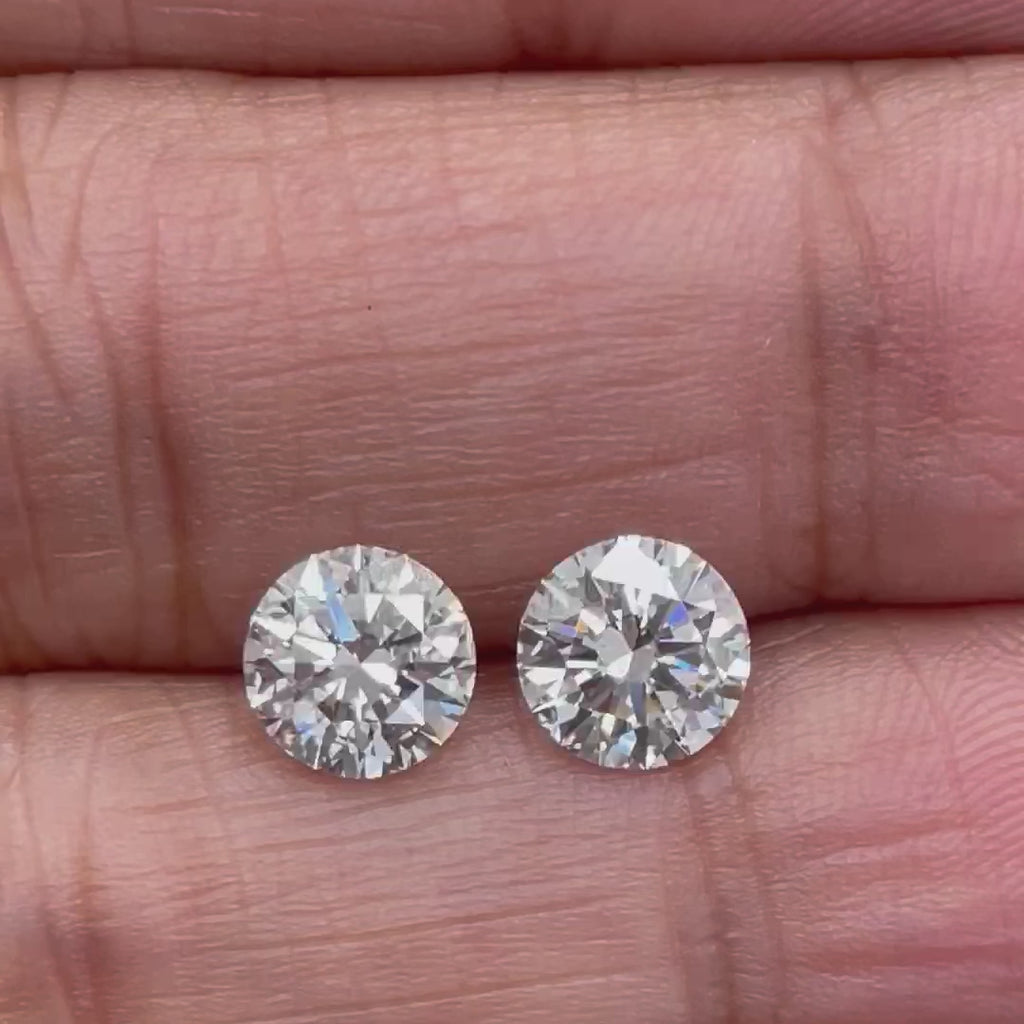
Versatility for Every Outfit & Occasion
Diamond studs are the most versatile jewelry piece you can own—they adapt to any look:
-
Casual: A 0.25–0.50 TCW pair with a white t-shirt, jeans, and sneakers—adds “quiet luxury” to a laid-back outfit.
-
Work: A 0.50–0.75 TCW pair with a blazer and button-down—polished enough for meetings, yet not distracting.
-
Formal: A 1.00+ TCW pair with a little black dress or gown—subtle sparkle that complements, not competes with, formal wear.
-
Special Events: They’re perfect for milestones like anniversaries, graduations, or birthdays—symbolizing lasting value.
Durability for Daily Wear
Diamonds are the hardest natural substance (10 on the Mohs scale), so diamond studs can withstand daily wear without scratching or losing their sparkle. Unlike delicate necklaces or bracelets that break easily, studs are tough enough for cooking, cleaning, or playing with kids. With basic care, they’ll look like new for decades.
Sentimental Value
Diamond studs often carry deep meaning: they’re given as graduation gifts, first anniversary presents, or heirlooms passed down from mother to daughter. For wives, a pair of diamond studs can remind them of a special moment—like the day you surprised her with them, or the year you celebrated a big family milestone. They’re not just jewelry—they’re wearable memories.
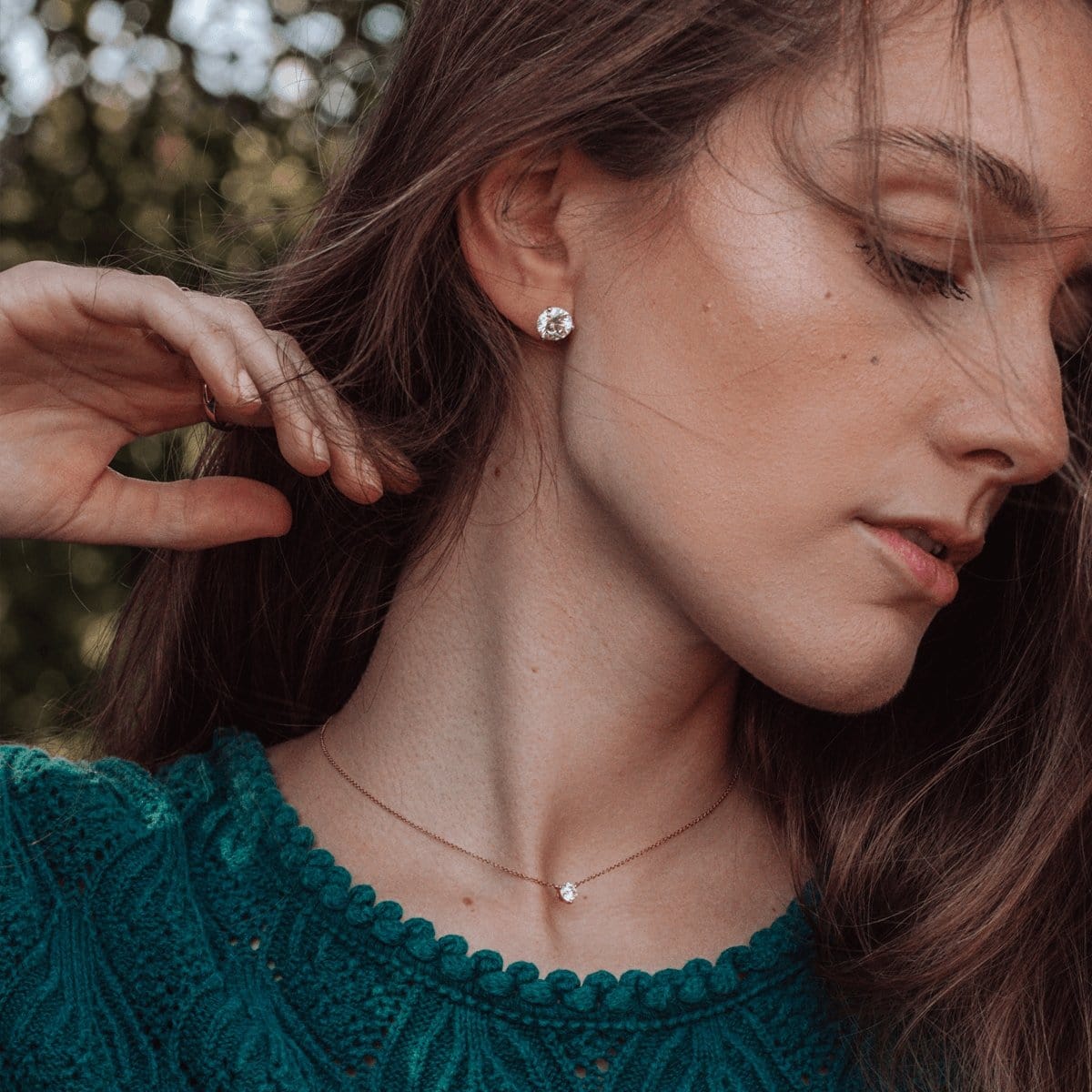
Accessibility for Every Budget
While diamond studs can be luxury pieces, they’re also accessible for most shoppers:
-
Budget-friendly pairs (0.25 TCW, SI1 clarity, G-J color, 14k gold): \(300–\)800.
-
Mid-range pairs (0.50–0.75 TCW, VS2 clarity, F-G color, 14k gold): \(800–\)2,000.
-
Luxury pairs (1.00+ TCW, VVS2 clarity, D-E color, platinum): \(2,000–\)10,000+.
This range means you can buy a pair that fits your budget, whether you’re shopping for a “just because” gift or an anniversary splurge.
Popular Styles of Diamond Studs
Diamond studs come in a variety of designs, from ultra-minimalist to subtly glamorous, ensuring there’s a style for every wife’s taste. Below are the most in-demand options:
Classic Round Diamond Studs (Everyday Essential)
Round-cut diamonds are the most popular choice for studs—their 58 facets maximize sparkle, making them a timeless pick:
-
14k White Gold Round Prong Studs (0.50 TCW): A staple for daily wear—white gold enhances the diamond’s brightness, and the prong setting boosts sparkle. Ideal for wives who prefer classic elegance.
-
Platinum Round Bezel Studs (1.00 TCW): A luxury option—platinum’s durability and white tone make these studs perfect for special occasions or everyday wear if you’re investing in quality. The bezel setting adds a modern edge.
-
14k Rose Gold Round Studs (0.25 TCW): A romantic twist—rose gold complements warm skin tones and adds a feminine touch. The small size is great for wives who prefer delicate jewelry or want to stack with other earrings.
Princess-Cut Diamond Studs (Modern & Edgy)
Princess-cut diamonds are square-shaped with sharp corners—they offer a sleek, geometric alternative to round cuts:
-
14k Yellow Gold Princess Prong Studs (0.75 TCW): Yellow gold adds warmth to the princess cut’s sharp edges—perfect for wives who love classic metals with a modern diamond shape.
-
Sterling Silver Rhodium-Plated Princess Studs (0.30 TCW): An affordable option—rhodium plating gives silver a white gold-like finish, and the princess cut adds edge. Best for occasional wear or as a “starter” pair.
Halo Diamond Studs (Sparkly & Romantic)
Halo studs feature a center diamond surrounded by tiny “halo” diamonds—they create the illusion of a larger stone and add extra sparkle:
-
14k White Gold Halo Studs (1.00 TCW Total): The center diamond is 0.50 carats, with a halo of tiny diamonds adding 0.50 TCW. The white gold makes the total sparkle look brighter—ideal for anniversary gifts.
-
Platinum Halo Studs (1.50 TCW Total): A luxury halo option—platinum’s durability ensures the tiny halo diamonds stay secure, and the 1.50 TCW total size makes these studs a statement piece for formal events.
Colored Diamond Studs (Unique & Bold)
Colored diamonds (e.g., pink, yellow, blue) add a unique twist to classic studs—perfect for wives who want to stand out from traditional white diamonds:
-
14k Yellow Gold Yellow Diamond Studs (0.50 TCW): Yellow diamonds (also called “canary diamonds”) complement yellow gold, creating a cohesive, warm look. The subtle yellow hue adds personality without being too bold.
-
14k White Gold Pink Diamond Studs (0.30 TCW): Pink diamonds are rare and romantic—white gold makes their pink hue pop, and the small size is great for everyday wear.
How to Wear Diamond Studs
Wearing diamond studs is easy—their versatility lets your wife style them for any look, from casual to formal. Below are tips to maximize their impact:
Styling for Casual Looks
-
Solo Studs: A 0.25–0.50 TCW pair of round or princess-cut studs with a graphic tee, high-waisted jeans, and white sneakers. Keep other jewelry minimal (e.g., a simple silver necklace or plain watch) to let the diamonds shine.
-
Layered with Other Earrings: If your wife has multiple lobe piercings, pair small diamond studs (0.10–0.20 TCW) with tiny gold or silver hoops in her second piercing. This creates a trendy, layered look that’s still casual.
-
Loungewear + Studs: Add a 0.30 TCW pair to an oversized hoodie and leggings. Throw on ankle boots or fuzzy slippers for “elevated loungewear” that’s perfect for coffee runs or hanging with family.
Styling for Work Wear
-
Minimalist Studs: A 0.50 TCW pair of white gold or platinum round studs pairs with a blazer, button-down shirt, and tailored trousers. They’re subtle enough for meetings but add a touch of luxury to a plain outfit.
-
Rose Gold Studs + Soft Tones: 14k rose gold studs (0.30–0.50 TCW) complement soft workwear colors (e.g., light blue, beige, pale pink). Pair with a knit sweater and wide-leg pants for a polished, feminine look.
-
Princess-Cut Studs + Bold Colors: Princess-cut studs in yellow gold (0.50 TCW) add edge to bold workwear (e.g., a red blazer or navy dress). The geometric shape balances the bright color, creating a professional yet stylish look.
Styling for Formal Occasions
-
Large Round Studs + Gown: A 1.00+ TCW pair of platinum round studs pairs with a floor-length gown in a neutral color (black, champagne, ivory). Skip a necklace—let the diamonds be the focal point, and add a thin gold or platinum bracelet.
-
Halo Studs + Cocktail Dress: Halo diamond studs (1.00 TCW total) complement a knee-length cocktail dress and strappy heels. The extra sparkle catches light under party lights, making her stand out without being over-the-top.
-
Colored Diamond Studs + Formal Separates: Pink or yellow diamond studs (0.50 TCW) add a unique touch to a silk camisole and tailored trousers. Pair with a matching clutch (e.g., pink clutch for pink diamonds) to tie the look together.
Diamond Studs: Perfect Gift for Your Wife
Diamond studs are one of the most thoughtful, meaningful gifts you can give your wife—they’re timeless, practical, and show you’ve invested in something she’ll wear and cherish for years. Unlike flowers or chocolates (which fade or are consumed), diamond studs are a lasting reminder of your love and appreciation.
Why It Resonates as a Wife’s Gift
-
Timelessness: Diamond studs never go out of style—she’ll wear them for decades, from your 5th anniversary to milestone moments like sending kids to college or retiring together.
-
Personalization: You can choose a style that fits her taste—minimalist round studs if she’s subtle, halo studs if she loves sparkle, or colored diamonds if she’s unique.
-
Symbolism: Diamonds represent durability and eternal love—gifting them says, “I see a future with you, and I want to give you something that lasts as long as our marriage.”
Top Diamond Stud Gifts for Your Wife
-
14k White Gold Round Prong Studs (0.75 TCW): A versatile choice—perfect for everyday wear and special occasions. Ideal for birthdays, Mother’s Day, or “just because” gifts.
-
14k Rose Gold Halo Studs (1.00 TCW Total): Romantic and sparkly—rose gold adds warmth, and the halo design makes the diamonds look larger. Great for anniversaries (especially 1st or 5th, which are diamond-themed).
-
Platinum Princess-Cut Studs (0.50 TCW): A luxury option—platinum’s durability and the princess cut’s modern edge are perfect for wives who love sleek, high-quality jewelry.
Tips for Choosing the Right One
-
Know Her Style: If she wears mostly white gold or silver, choose white gold or platinum studs. If she loves warm tones, go for yellow or rose gold. If she’s minimalist, avoid halo or colored diamonds—stick to classic round cuts.
-
Consider Her Lifestyle: If she’s active (works out, gardens, plays with kids), choose a bezel setting (more secure) and 14k gold (durable). If she works in an office, a prong setting and larger TCW (0.50–0.75) are perfect.
-
Add a Personal Touch: Pair the studs with a handwritten note explaining why you chose them—e.g., “These diamond studs remind me of how you light up every room, and I wanted you to have something as bright as you are.” It adds sentiment that makes the gift even more special.
How to Clean Diamond Studs
Diamond studs are low-maintenance, but regular cleaning keeps them sparkling and prevents buildup of dirt, lotion, and oil. The process is simple and can be done at home with common household items.
Daily Care to Prevent Dulling
-
Wipe After Wear: Use a soft, dry microfiber cloth to wipe the diamonds and metal after each wear. This removes skin oils and lotion that can cling to the diamond’s surface, dulling its sparkle.
-
Store Properly: Keep the studs in a soft jewelry pouch or a jewelry box with a padded compartment. Avoid storing them with other jewelry that has sharp edges (can scratch the metal or diamond). For diamond nose studs (smaller and more delicate), store them in a tiny jewelry box compartment to avoid losing them.
-
Remove Before Activities: Take off diamond studs before showering (chlorine and shampoo leave film), swimming (saltwater/tap water dulls sparkle), working out (sweat causes buildup), or applying makeup/hairspray (chemicals damage metal).
Step-by-Step Deep Cleaning Process
For a thorough clean (aim for once every 1–2 weeks), follow these steps—safe for both ear studs and diamond nose studs:
-
Mix a Gentle Solution: In a small bowl, combine 1 cup warm (not hot) water with 1 drop of mild dish soap (like Dawn). Avoid antibacterial or moisturizing soaps—they leave residue on diamonds.
-
Soak the Studs: Place diamond ear studs or nose studs in the solution. Let ear studs soak for 15–20 minutes; nose studs (smaller and more delicate) need only 5–10 minutes. This loosens dirt trapped in prongs or bezels.
-
Scrub Gently: Use a soft-bristled toothbrush (designated for jewelry—never your regular one) to clean:
-
Ear Studs: Scrub diamond facets in circular motions to remove buildup. For prong settings, brush between prongs to dislodge dirt; for bezel settings, wipe the metal rim gently.
-
Nose Studs: Use the toothbrush’s tip to clean the tiny diamond and post—avoid applying pressure, as nose studs are smaller and more fragile.
-
Rinse Thoroughly: Hold the studs under warm running water to remove soap. For nose studs, use a strainer to prevent losing them. Pat dry immediately with a lint-free microfiber cloth—air-drying can leave water spots.
-
Buff for Sparkle: Gently buff the diamond with a jewelry polishing cloth (avoid using on gold-plated studs, as it removes plating) to restore maximum shine.
What to Avoid When Cleaning
-
Abrasive Cleaners: Never use toothpaste, baking soda, or scouring pads—they scratch diamond surfaces (creating micro-abrasions that dull sparkle) and damage metal settings.
-
Ultrasonic Cleaners: Safe for large diamond ear studs but risky for small nose studs (vibrations can loosen tiny diamonds) or bezel-set studs (may damage the metal rim). Stick to hand cleaning for delicate styles.
-
Harsh Chemicals: Avoid jewelry cleaners with ammonia, bleach, or alcohol—they discolor gold (especially rose gold) and strip the protective coating on some diamond settings.
Where to Buy a Real Diamond Nose Stud
Diamond nose studs are smaller and more specialized than ear studs, so it’s crucial to buy from reputable sources to ensure authenticity and safety (nose piercings are more prone to infection). Below are the best places to purchase real diamond nose studs:
Online Retailers (Convenient & Transparent)
Online stores offer a wide range of sizes and styles, with detailed product descriptions and certifications:
-
Blue Nile: Known for ethically sourced diamonds—their diamond nose studs feature 0.01–0.05 carat diamonds (SI1–VS2 clarity, G-J color) in 14k gold or platinum settings. All diamonds come with GIA certificates, and they offer free shipping + 30-day returns.
-
Body Candy: Specializes in body jewelry—their real diamond nose studs include prong-set or bezel-set designs in 14k gold (yellow/white/rose) or surgical steel (for sensitive skin). Prices start at \(50 (small 0.01ct diamonds) to \)200 (0.05ct diamonds), and they provide clear photos of each piece.
-
Etsy: Great for handmade, unique diamond nose studs—look for sellers with 5-star reviews who specify “real diamonds” and provide clarity/color details. Many offer custom designs (e.g., tiny diamond in a heart-shaped setting) and use 14k gold for durability.
In-Store Retailers (Hands-On Inspection)
In-person shopping lets you see the nose stud’s size and sparkle, and get expert advice:
-
Local Piercing Studios: Reputable piercing studios (e.g., those certified by the Association of Professional Piercers) sell real diamond nose studs—they prioritize hypoallergenic metals (14k gold, titanium) and ethically sourced diamonds. Staff can help you choose the right gauge (usually 20g–18g) for your piercing.
-
Fine Jewelry Stores (e.g., Kay Jewelers, Zales): These stores offer small diamond nose studs in 14k gold settings—ideal if you want to inspect the diamond’s sparkle in person. They often have sales (e.g., 15% off during holidays) and can resize the post if needed.
-
Luxury Jewelers (e.g., Tiffany & Co., Cartier): For high-end diamond nose studs (0.05–0.10ct diamonds, D-F color), luxury jewelers offer heirloom-quality pieces. These are pricier (\(300–\)1,000+) but come with lifetime cleaning and repair services.
Key Tips for Buying Real Diamond Nose Studs
-
Check for Certifications: For diamonds over 0.03ct, ask for a GIA or AGS certificate—this confirms the diamond’s authenticity and quality (clarity, color, cut).
-
Prioritize Hypoallergenic Metals: Nose piercings are sensitive—choose 14k gold, titanium, or surgical steel settings to avoid infection. Avoid nickel-plated or sterling silver (tarnishes easily and irritates skin).
-
Choose the Right Size: Most diamond nose studs have diamonds between 0.01–0.05ct (2mm–3mm in diameter)—small enough to be discreet but large enough to show sparkle. Avoid diamonds over 0.10ct (too big for most nose piercings).
How Much Are Diamond Stud Earrings?
The cost of diamond stud earrings depends on three core factors: diamond quality (4Cs), metal type, and setting style. Below is a detailed breakdown to help you budget:
Price by Diamond Quality (4Cs)
-
Budget-Friendly (0.25–0.50 TCW):
-
Cut: Good (not Excellent/Very Good)
-
Color: I-J (near-colorless, slight warmth)
-
Clarity: SI2 (may have visible inclusions under close inspection)
-
Metal: 14k gold (yellow/white) or rhodium-plated silver
-
Price: \(300–\)800
-
Best for: First-time buyers, teens, or everyday wear where subtlety is key.
-
Mid-Range (0.50–1.00 TCW):
-
Cut: Very Good/Excellent
-
Color: G-H (near-colorless, no visible warmth to the naked eye)
-
Clarity: VS2–SI1 (eye-clean, no visible inclusions)
-
Metal: 14k gold (any color) or entry-level platinum
-
Price: \(800–\)3,000
-
Best for: Wives, anniversary gifts, or those wanting everyday glamour without overspending.
-
Luxury (1.00+ TCW):
-
Cut: Excellent
-
Color: D-F (colorless, most valuable)
-
Clarity: VVS2–VS1 (very few inclusions, even under magnification)
-
Metal: 18k gold or platinum
-
Price: \(3,000–\)15,000+
-
Best for: Heirloom pieces, milestone events (e.g., 25th anniversary), or those prioritizing top-tier diamond quality.
Additional Cost Factors
-
Setting Style: Bezel settings cost \(50–\)150 more than prong settings (require more metal). Halo settings add \(200–\)500 (extra tiny diamonds + labor).
-
Brand Premium: Luxury brands (e.g., Tiffany, Cartier) charge 30–50% more for their name and craftsmanship. A Tiffany 1.00 TCW platinum stud pair costs ~\(8,000, while a non-branded equivalent is ~\)5,000.
-
Backing Type: Screw backs cost \(20–\)50 more than butterfly backs (more secure, better for active wear).
Frequently Asked Questions About Diamond Studs
Q: Are real diamond studs worth the investment?
A: Yes—real diamond studs hold their value better than fake (CZ or lab-created) options, and they last a lifetime. Unlike CZ (which fades over time), real diamonds retain their sparkle and can be passed down as heirlooms. For wives, real diamond studs are a meaningful gift that symbolizes lasting love—fake studs lack that sentimental and monetary value.
Q: Can diamond studs be worn by people with sensitive ears?
A: Yes—choose studs with hypoallergenic metals like 14k gold, platinum, or titanium. Avoid nickel-plated or sterling silver (common irritants). For extra sensitivity, opt for bezel settings (less metal touches the earlobe) and screw backs (reduce friction). Test the stud by wearing it for 1–2 hours—if no redness or itching occurs, it’s safe for regular wear.
Q: How do I tell if diamond studs are real or fake?
A: Use these quick tests:
-
Fog Test: Breathe on the diamond—real diamonds disperse fog immediately (they conduct heat well), while fake diamonds stay foggy for 2–3 seconds.
-
Loupe Test: Use a 10x jeweler’s loupe to check for inclusions—real diamonds have tiny flaws (SI1–VS2), while fake diamonds (CZ) are “flawless” or have obvious manufacturing marks.
-
Certification: Ask for a GIA or AGS certificate—real diamonds over 0.03ct come with these, while fakes do not.
Q: Can diamond studs be resized?
A: The post length can be resized by a jeweler (e.g., shortening a long post for a child’s earlobe), but the diamond size cannot be changed. For nose studs, jewelers can trim the post to fit your piercing’s gauge (e.g., from 18g to 20g) for a better fit. Resizing costs \(20–\)50, depending on the metal.
Q: How long do diamond studs last?
A: With proper care, real diamond studs can last indefinitely—diamonds are the hardest natural substance, so they won’t scratch or wear down. The metal setting (14k gold, platinum) can last 50+ years with regular cleaning and maintenance (e.g., re-plating gold if it fades, tightening loose prongs). Fake studs (CZ) last only 1–3 years before the stone fades or the setting tarnishes.
Conclusion: Diamond Studs—Minimalist Shine, Max Impact
Diamond studs are more than just earrings—they’re a testament to the power of minimalism: simple design, maximum sparkle, and enduring meaning. Whether you’re gifting a pair to your wife for your anniversary, treating yourself to everyday luxury, or buying a tiny diamond nose stud to elevate your piercing, they offer a versatility and timelessness that no other jewelry can match. From their durable diamonds (formed over billions of years) to their hypoallergenic metals (safe for sensitive skin), every detail is crafted to last—just like the love and memories they represent.
Now that you know how to choose, clean, and buy real diamond studs, it’s time to embrace their minimalist shine. Browse our curated collection of diamond studs—from budget-friendly 14k gold ear studs to luxury platinum nose studs—and use code DIAMONDSTUD20 to get 20% off your first order. Whether you’re celebrating a milestone or simply want to add a touch of elegance to your daily routine, diamond studs are the perfect choice. Shop now and let your minimalist sparkle make a max impact.


